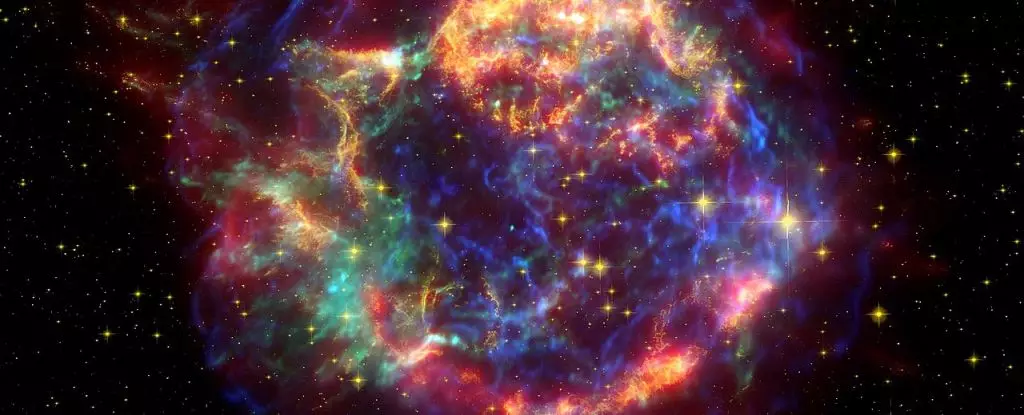The study of energetic cosmic-ray electrons has provided scientists with vital information about the origins of these mysterious particles. The CALorimetric Electron Telescope (CALET), situated on the International Space Station, has collected a substantial dataset since 2015, consisting of over 7 million particles. This dataset has led researchers to identify at least one potential nearby source of cosmic-ray electrons, with the possibility of multiple sources. The detection of the most energetic cosmic-ray electrons has become a significant breakthrough in understanding these particles’ origins.
Cosmic-ray electrons have been a subject of intrigue since their existence was first observed over a century ago. While their presence is well-documented, their exact source has remained elusive. These particles, which include atomic nuclei, protons, and electrons, traverse the universe at speeds close to that of light, possessing immense energy. Scientists speculate that energetic sources are responsible for their existence, with supernova remnants being the most probable explanation. However, other potential sources, such as the annihilation of dark matter, have also been considered. Understanding the origin of cosmic-ray electrons has become a priority for physicists.
Detecting cosmic-ray electrons presents significant challenges as they interact with atoms and molecules in the atmosphere, resulting in showers of particles. The detection process focuses on the detection of these showers rather than the cosmic rays themselves. Furthermore, high-energy electron detectors often encounter interference from fast-moving protons, which can disrupt the accuracy of the results. However, the CALET experiment, situated in space, allows for direct detection of cosmic rays, particularly at high energies. Previous work using CALET allowed the detection of cosmic rays up to 4.8 teraelectronvolts. By implementing new techniques to eliminate errors caused by interfering protons, the research team has now successfully detected electron cosmic rays up to 7.5 teraelectronvolts, substantially expanding the range of data available for analysis.
Interestingly, the analysis of the data obtained from CALET revealed new insights into cosmic-ray incidence at higher energies. Unlike previous expectations that cosmic rays would diminish as energy levels increased, the team found the opposite trend. At the highest energies, cosmic rays appeared to increase in incidence. These findings suggest that the source of these energetic particles must be relatively close to us since cosmic rays lose energy as they travel through space. Notably, some nearby supernova remnants align with the detection of the highest-energy cosmic rays in the dataset, providing further support for their potential origin.
The continued observation and analysis of the CALET data hold promising prospects for unraveling the origins of cosmic-ray electrons. The observations from CALET offer the enticing possibility of measuring matter from a specific nearby supernova remnant here on Earth. T. Gregory Guzik, leader of the US branch of the CALET Collaboration, acknowledges the significance of these observations, as they pave the way for a deeper understanding of cosmic-ray origins.
The study of energetic cosmic-ray electrons using the CALET experiment has shed light on their mysterious origins. The detection of these particles at the highest energies provides a compelling clue towards the existence of a nearby source. While the exact source remains unknown, the proximity and characteristics of certain supernova remnants align with the observations. Further research and analysis using CALET’s dataset offer promising avenues for unlocking the secrets of cosmic-ray electrons and expanding our understanding of the vast universe.


Leave a Reply